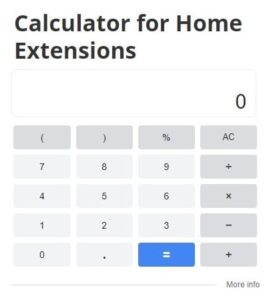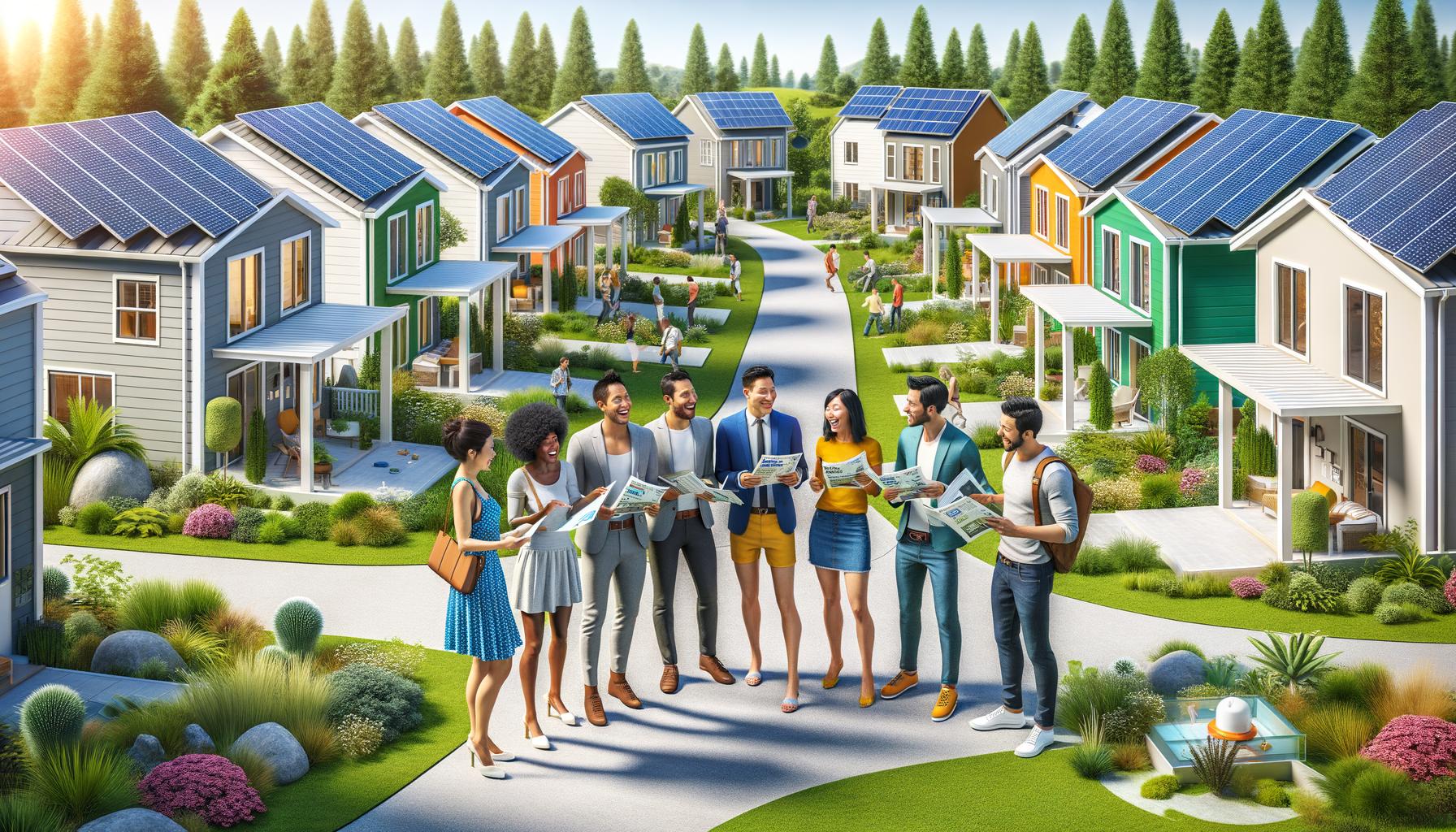
At Home Owners Association, we understand the importance of qualifying energy-efficient home improvements. These upgrades not only reduce your carbon footprint but also lead to significant savings on utility bills.
In this guide, we’ll explore the criteria for energy-efficient upgrades and highlight popular improvements that can transform your home. We’ll also discuss the long-term benefits and provide resources to help you get started on your energy-saving journey.
What Are Energy-Efficient Home Improvements?
Definition and Scope
Energy-efficient home improvements are upgrades that reduce energy consumption and lower utility bills. These improvements enhance comfort and minimize environmental impact. They range from simple changes to major renovations, all designed to optimize a home’s energy use.
Types of Energy-Efficient Upgrades
The most common energy-efficient upgrades include:
- High-efficiency HVAC systems
- Additional insulation
- Replacement of old windows and doors
- Upgrade to LED lighting
Advanced upgrades might involve:
- Solar panel installations
- Smart home technology implementation
EPA estimates that homeowners can save an average of 15% on heating and cooling costs (or an average of 11% on total energy costs) by air sealing their homes. The Solar Energy Industries Association states that the average residential solar system can offset 100% of a home’s electricity use, which leads to significant long-term savings.
Measurable Benefits for Homeowners
Energy-efficient improvements offer tangible financial benefits. The U.S. Environmental Protection Agency estimates that homeowners can save an average of 15% on heating and cooling costs (or an average of 11% on total energy costs) by air sealing their homes and adding insulation in attics, floors over crawl spaces, and accessible basement rim joists.
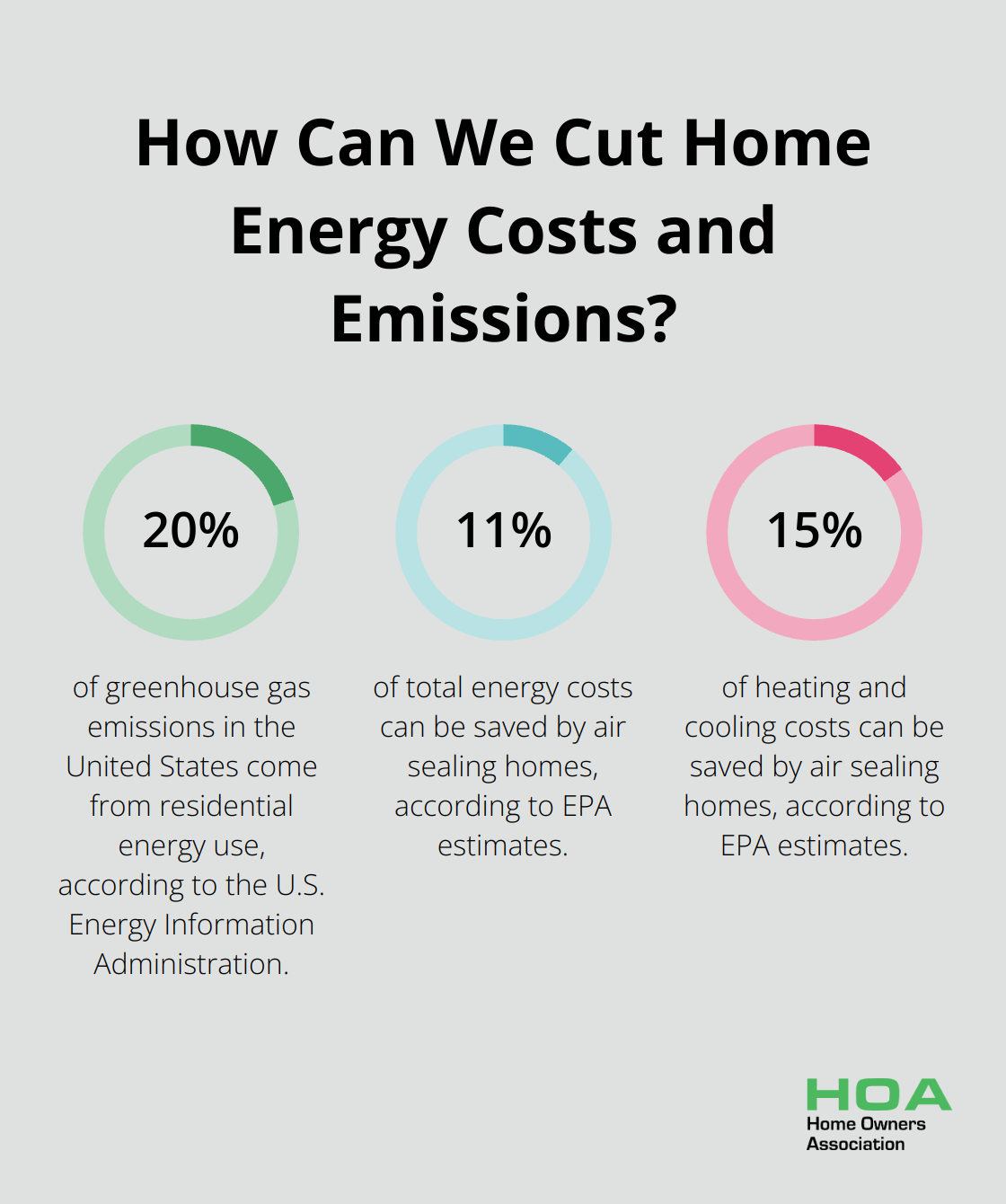
These upgrades can also increase property value. Homes with solar panels can sell for up to 4% more than homes without them. This translates to an average increase in home value, depending on the local market.
Environmental Impact
The environmental benefits of energy-efficient home improvements are substantial. The U.S. Energy Information Administration reports that residential energy use accounts for about 20% of greenhouse gas emissions in the United States. Homeowners can significantly reduce their carbon footprint through energy-efficient upgrades.
For example, replacing a single incandescent bulb with an LED can prevent 400 pounds of greenhouse gas emissions over its lifetime. When you multiply this by every light in your home, the impact becomes considerable.
These improvements transform homes across Australia. Homeowners report not only lower energy bills but also increased comfort and pride in their environmentally conscious choices.
The next section will explore specific criteria for qualifying energy-efficient upgrades to help you make informed decisions for your home.
What Qualifies as Energy-Efficient?
At Home Owners Association, we often receive questions about the criteria for energy-efficient upgrades. Government agencies and industry organizations set these standards to ensure that improvements genuinely reduce energy consumption and benefit homeowners.
Energy Star Certification
Energy Star, a program run by the U.S. Environmental Protection Agency and the U.S. Department of Energy, sets the gold standard for energy efficiency. Products with the Energy Star label undergo independent certification to save energy without sacrificing features or functionality. Energy Star certified windows, doors, and skylights can shrink energy bills and carbon footprints by an average of up to 13% percent on heating.
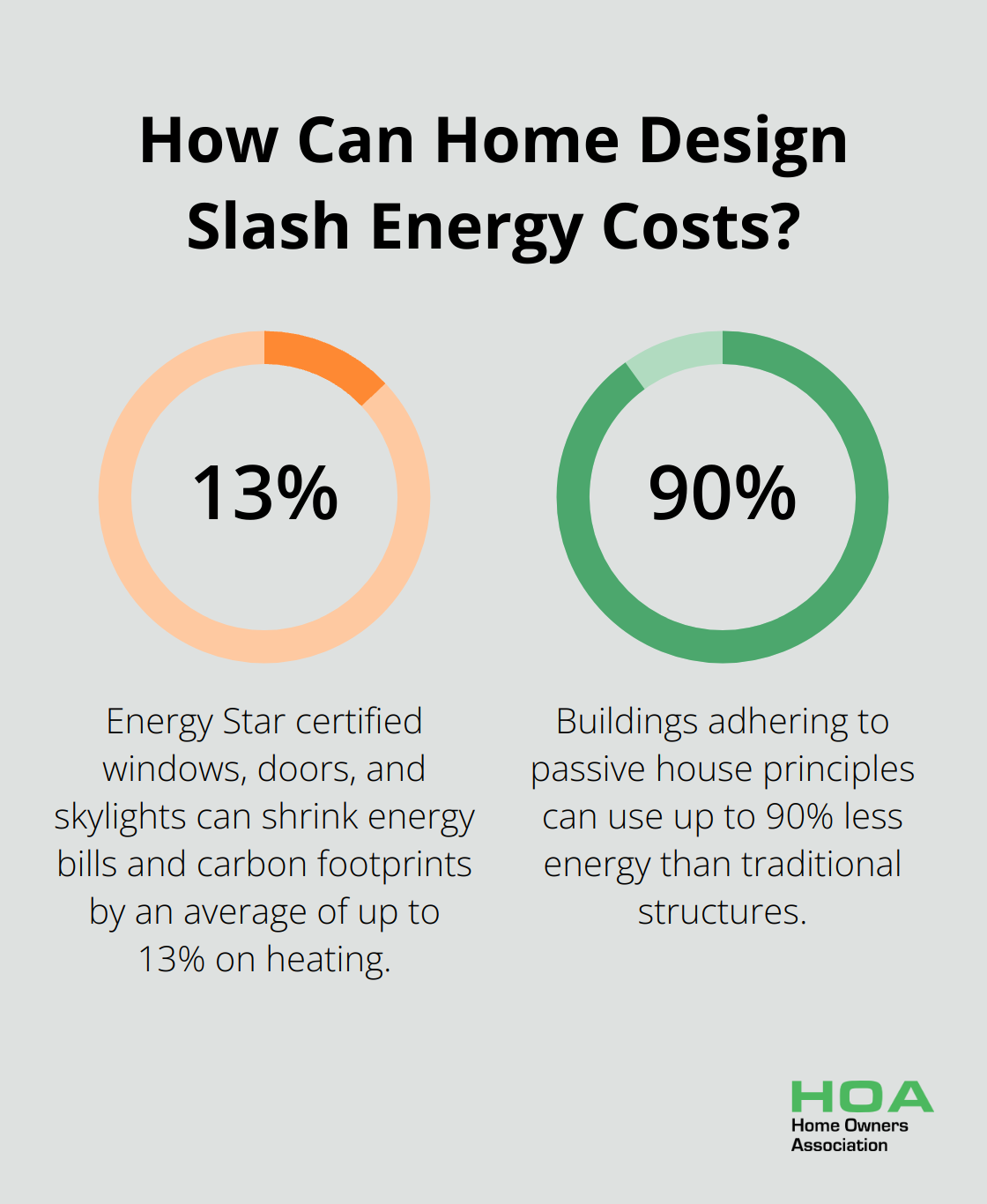
To qualify for Energy Star certification, products must meet strict energy efficiency guidelines. These guidelines vary by product category but generally require the product to be significantly more efficient than the minimum federal standard. Energy Star certified refrigerators, for instance, must be at least 15% more efficient than the federal minimum energy efficiency standard.
Minimum Efficiency Standards
While Energy Star certification remains voluntary, mandatory minimum efficiency standards exist for many household appliances and systems. The Department of Energy sets these standards and updates them regularly to push for greater energy efficiency.
As of 2023, new standards require a seasonal energy efficiency ratio (SEER) of no less than 14 for central air conditioners in the northern United States. Heat pumps must have a minimum SEER of 14 and a Heating Seasonal Performance Factor (HSPF) of 8.2.
Documentation and Verification
Proper documentation proves essential to ensure that your energy-efficient upgrades qualify for any available rebates or tax credits. This typically includes:
- Receipts for all purchases and installations
- Manufacturer certifications stating that the product meets energy efficiency requirements
- Energy performance ratings for windows, doors, and skylights
For larger projects (such as whole-house energy retrofits), you may need to conduct a professional energy audit before and after the improvements. This provides concrete evidence of the energy savings achieved.
Industry Standards and Best Practices
Beyond certifications and minimum standards, industry best practices play a significant role in determining what qualifies as energy-efficient. These practices often exceed minimum requirements and reflect the latest advancements in energy-saving technologies.
For example, the building industry has developed standards for passive house design, which focuses on creating ultra-low energy buildings that require little energy for space heating or cooling. While not a certification in itself, adhering to passive house principles (such as super-insulation and airtight construction) can result in buildings that use up to 90% less energy than traditional structures.
Future Trends in Energy Efficiency
As technology advances and environmental concerns grow, the definition of “energy-efficient” continues to evolve. Emerging trends include:
- Smart home systems that optimize energy use based on occupancy and weather conditions
- Integration of renewable energy sources (like solar panels) with energy storage solutions
- Advanced building materials that provide better insulation and thermal regulation
These innovations will likely shape future standards and certifications for energy-efficient home improvements. Homeowners who stay informed about these trends can make forward-thinking decisions that will benefit them for years to come.
The next section will explore specific examples of popular energy-efficient home improvements that meet these qualifications and standards.
Top Energy-Efficient Home Upgrades
At Home Owners Association, we have observed the transformative power of energy-efficient upgrades in homes across Australia. This chapter explores the most impactful improvements that can significantly reduce energy consumption and utility costs.
Insulation: The Core of Energy Efficiency
Proper insulation plays a vital role in maintaining a comfortable home temperature while minimizing energy waste. Insulating your walls can typically save around 15% on heating and cooling costs. To maximize effectiveness, focus on insulating your roof and ceiling first, as this can account for 25-35% of heat loss or gain.
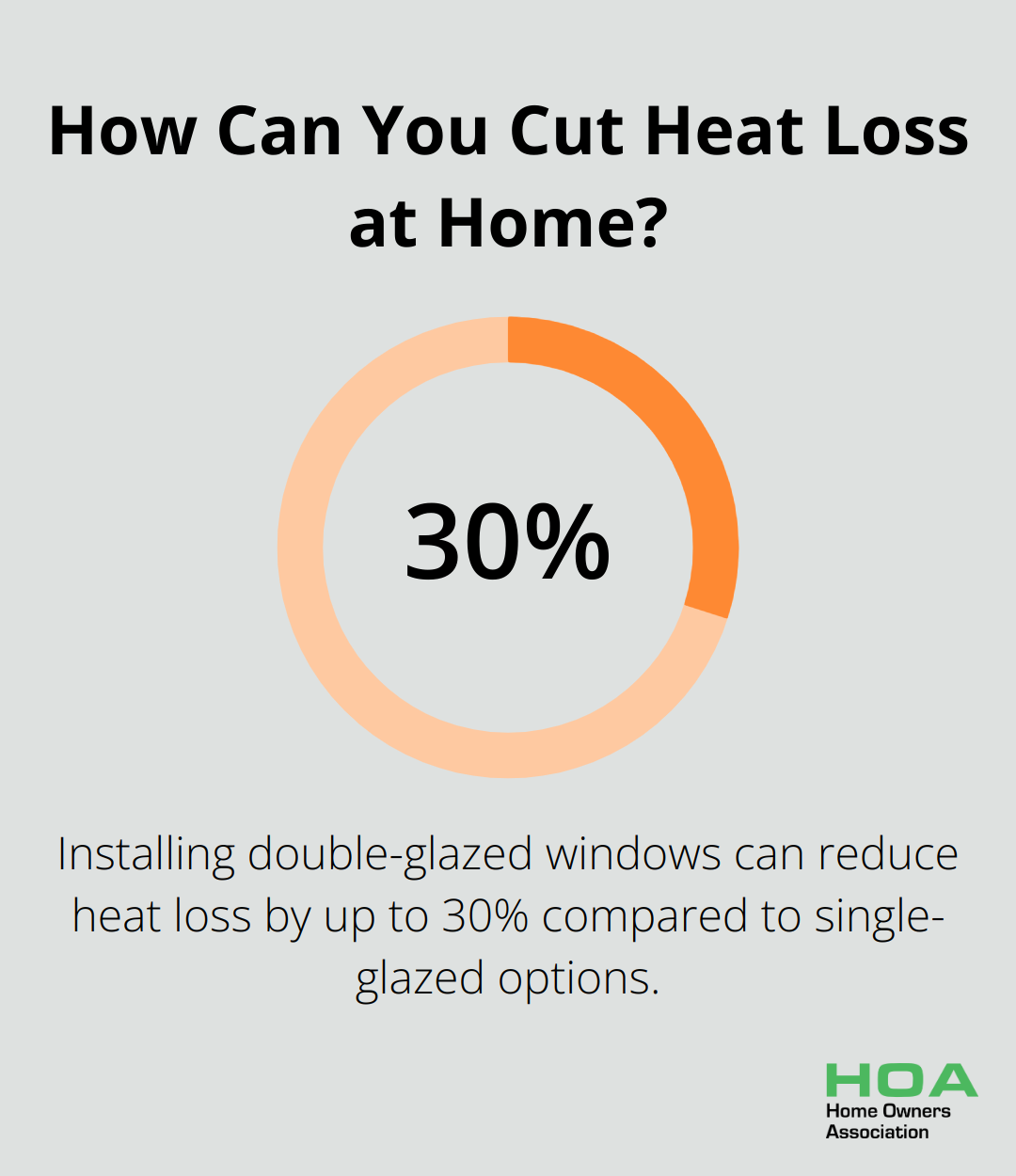
When you select insulation, pay attention to the R-value (which measures thermal resistance). Higher R-values indicate better insulation performance. For most Australian climates, the recommended R-value for ceiling insulation ranges between R3.0 and R6.0, depending on your specific location.
High-Efficiency HVAC Systems: Comfort and Conservation
An upgrade to a high-efficiency heating, ventilation, and air conditioning (HVAC) system can lead to energy savings. When shopping for a new air conditioner, use filters to shortlist and compare models that meet your needs, considering their energy ratings.
When you shop for a new HVAC system, look for models with high energy star ratings. Additionally, consider reverse cycle air conditioners, which can be up to 300% more efficient than electric heaters for warming your home.
Windows and Doors: Sealing in Savings
Energy-efficient windows and doors can significantly reduce heat transfer, leading to lower heating and cooling costs. The Australian Window Association reports that an upgrade to double-glazed windows can reduce heat loss by up to 30% compared to single-glazed options.
For optimal energy efficiency, choose windows with low-E glass coatings and thermally broken frames. These features can further reduce heat transfer and improve overall home comfort.
Solar Panels: Power from the Sun
Solar panel installations have become increasingly popular in Australia (and for good reason). According to the Clean Energy Council, over 3 million Australian households now have rooftop solar systems installed. These systems can significantly reduce or even eliminate electricity bills while decreasing reliance on grid power.
When you consider solar panels, assess your roof’s orientation and shading to maximize energy production. South-facing roofs typically receive the most sunlight in Australia, making them ideal for solar panel installation.
Smart Home Technology: Intelligent Energy Management
Smart home devices can optimize energy use by automating and controlling various home systems. For instance, smart thermostats can learn your preferences and adjust temperature settings accordingly, potentially saving on heating and cooling costs.
Smart power strips and energy monitoring systems can help identify and reduce standby power consumption.
Final Thoughts
Energy-efficient home improvements offer numerous benefits for modern homeowners. These upgrades reduce utility bills, increase property value, and minimize environmental impact. Qualifying energy-efficient home improvements include insulation upgrades, high-efficiency HVAC systems, and solar panel installations.
Home Owners Association supports Melbourne homeowners in their energy efficiency journey. We provide expert advice and exclusive trade pricing for construction, renovation, and maintenance projects. Our team ensures that energy-efficient improvements meet quality standards and comply with local regulations.

The Australian Government’s Department of Industry, Science, Energy and Resources offers comprehensive guides on energy efficiency. The Clean Energy Council provides valuable insights into renewable energy options for homeowners. These resources help homeowners make informed decisions about energy-efficient upgrades that benefit both their finances and the environment.





